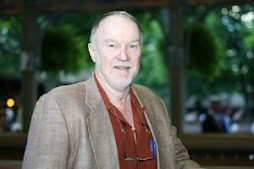Whole genome study looked at racing performance, distance, surface and height. Developed a scoring system of grades ABCD for racing performance and established the incidence of the grades at sales. Markers include a female-specific SNP. They also found a marker that is specific to Mr. Prospector horses, a SNP that's only present in the good Mr. P horses, and not in the non elite horses.
Data predicts that you can eliminate 50% of individuals on a short list at sales and retain 75% of the GSWs. Blind test found the 6 GSWs hidden among 55 moderate horses. Population is10% As, 40% Bs 40% Cs 10% Ds
Tested 27 G1 sprinters and all were homozygous for sprint genotype. But several horses who won the Kentucky Derby were homozygous sprinters. Race pace is crucial in American racing.
There are multiple SNPs strongly associated with different surfaces, some associated with muscle enzymes.
Matthew ends with perhaps the most appropriate comment of the day:
This is real and it's coming, and we hope that you will embrace it.
Almost all quarter horses are CCs, almost all Egyptian Arabians are TTs. Thoroughbreds, elite graded stakes winning horses, show what you would expect, more CTs than anything else, your basic normal distribution, slightly skewed in favor of CCs. National hunt (steeplechase) winners on the other hand are heavily skewed toward TTs, but no CCs at all.
New Equinome research published today, new study indicates that the myostatin gene is the most powerful indicator of best race distance. Says Equinome's marker performs 15 times better than any other marker in predicting best racing distance.
What genes are responding to exercise. Certain genes activity are significantly enhanced after exercise. The response increases over time as a result of training. It prepares the system to be able to be better able to respond to exercise.
Over 5k genes present in skeletal muscle. After year of training 16 genes increased activity and 58 decreased, The gene that changed the most was myostatin. Decreased its activity over 4 times.
Bob shows that the distribution of phenotypes of classic winners and leading sires has changed drastically since 1970s. Breed has gotten larger, lighter, more powerful, and not as balanced as they used to be and much less consistent. 2000s starting to be a little more consistent.
Secretariat turns out to be a critical horse in terms of biomechanics....His phenotype helps pull the breed back toward balance, through horses like A.P. Indy, Storm Cat, and Gone West.


OK, things brightened up after lunch. Bob heckling the audience, as usual. Hill and Binns wowing them with the depth of things, if I'm not mistaken.
ReplyDeleteSounds interesting. Will anything further be posted? I Tweeted this to some people; so you might hear a little about that.
Regards,
Frank
PS Your writing was not the tedious bit.
Bob, of course, is always entertaining, because he has fun doing it and invites the audience to have fun with him....and if they don't join in, THEN he'll demand they do! lol
ReplyDeleteThe highlight of the day for me tho, was when Emmeline Hill turned into a barracuda and basically went after Matthew Binns over the issue of exactly what marker is used to bracket the Myostatin gene that regulates muscle mass. The background is that there's a patent issue in the works and both have patent applications in. Hilarity ensues. Matthew handled it with class....but everyone, including Emmeline, who is a very gracious lovely lady, was very professional and charming all day.
John,
ReplyDeleteI've been intrigued by your blogging from this conference. I very much wish I could have attended. Just wasn't in the cards.
-- Glenn
John E. Madden, one of the greatest breeders of all time, wrote as follows: "As to the so-called intricate science of breeding in so blending the blood of the sire and the dam that winners may be produced in numbers, although of absorbing interest to the student and theorist, the practical man need confine himself to the formula only of breeding a good mare to a great horse taking into due consideration the varying qualities of each, and putting his trust in like producing like, or the likeness of some good ancestor. He will have his share of winners, his good years and bad years, and the experts will tack figures on to the pedigrees of his winners, and tell him how it all happened."
ReplyDelete